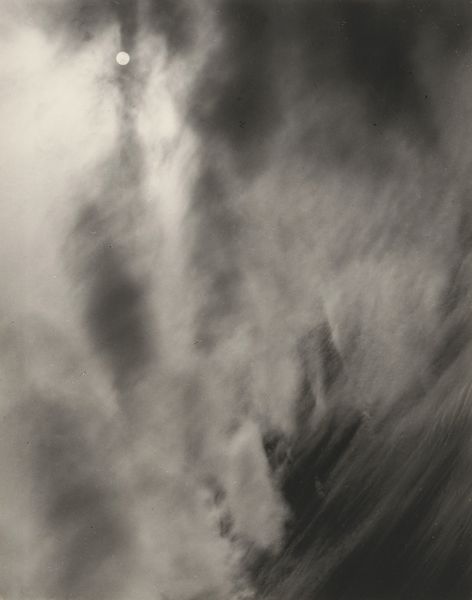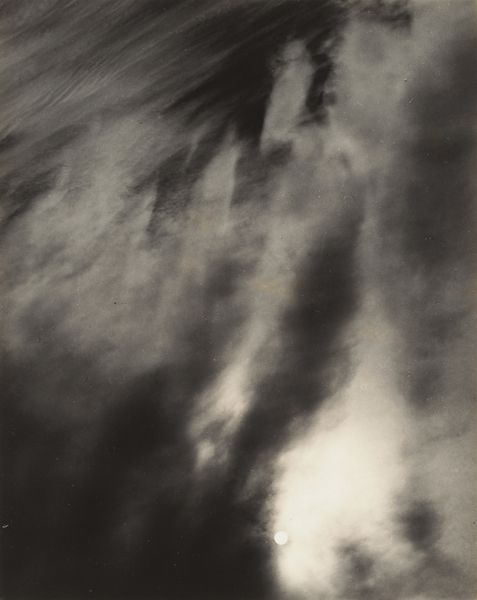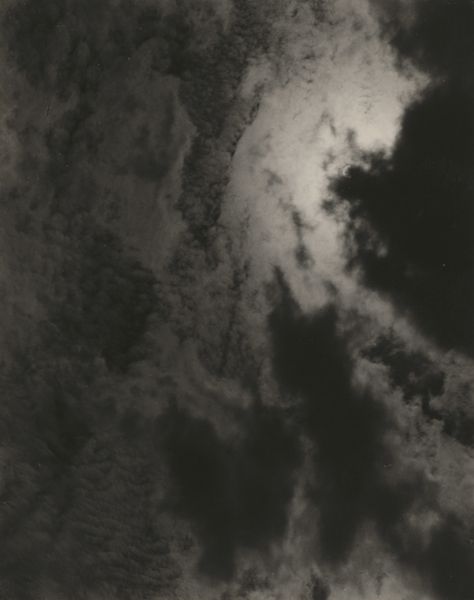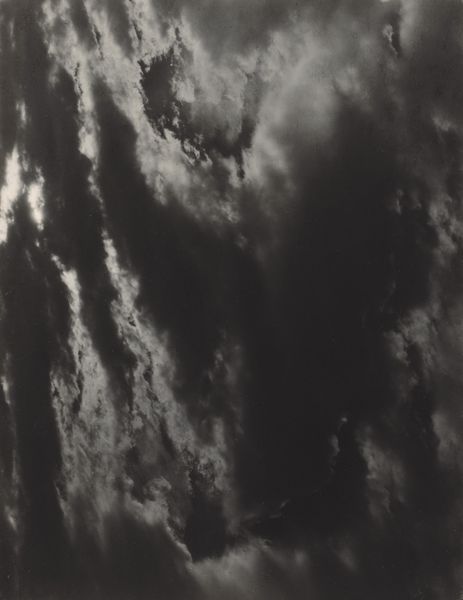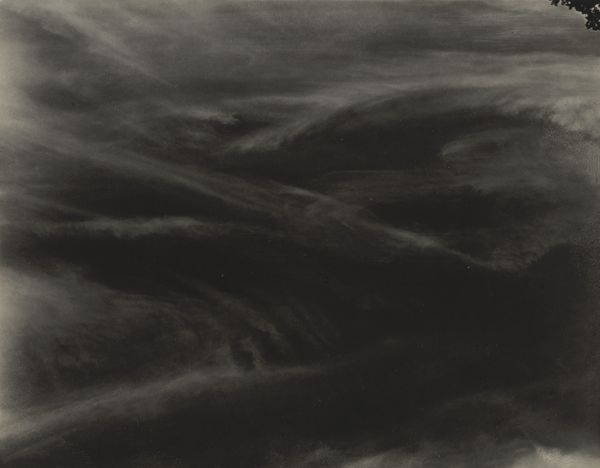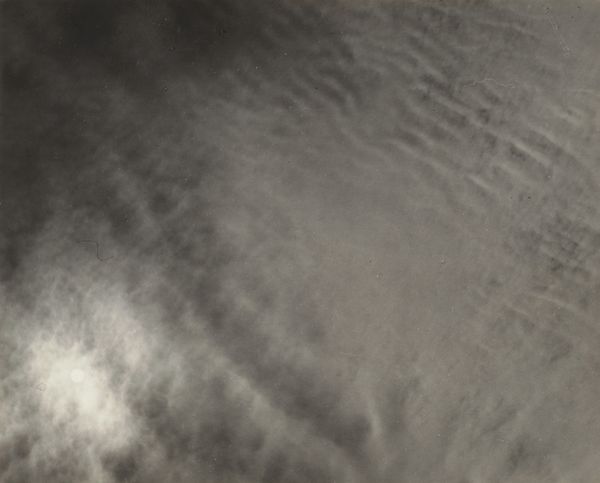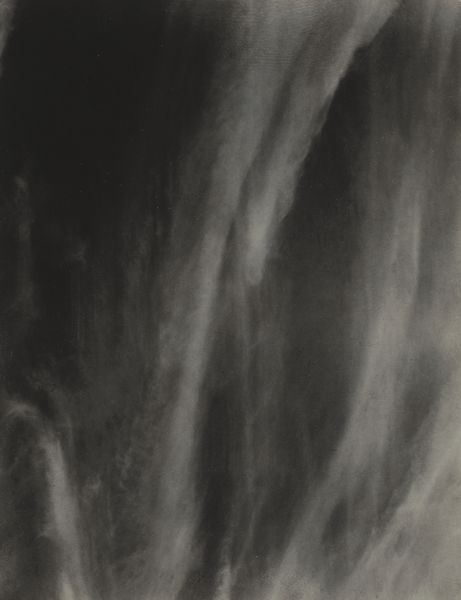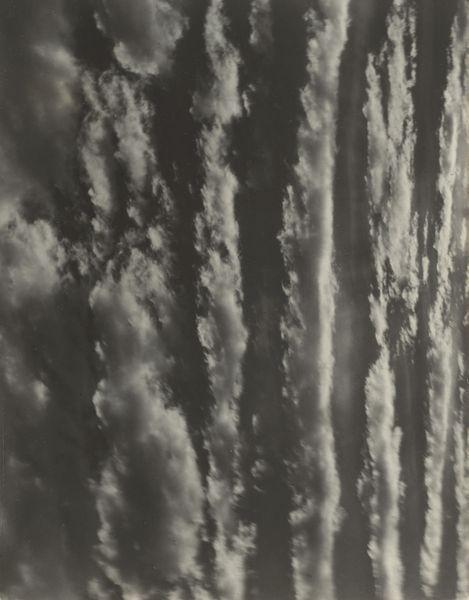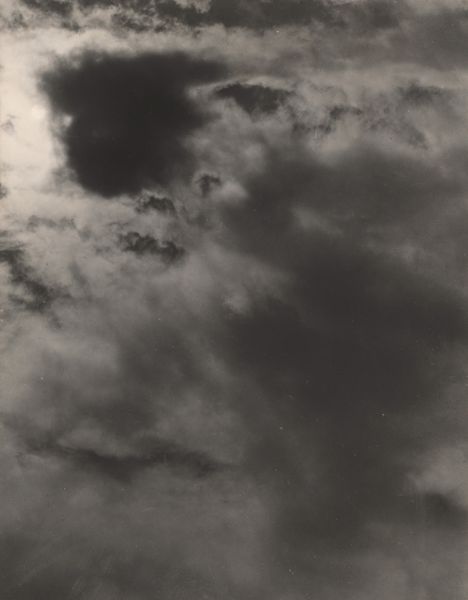
photography
#
pictorialism
#
landscape
#
photography
#
abstraction
#
modernism
Dimensions: sheet (trimmed to image): 11.9 x 9.3 cm (4 11/16 x 3 11/16 in.) mount: 35.2 x 27.3 cm (13 7/8 x 10 3/4 in.)
Copyright: National Gallery of Art: CC0 1.0
Curator: This work, entitled "Equivalent," comes to us from Alfred Stieglitz. He produced it between 1925 and 1927, and it's a wonderful example of his photography. Editor: It feels… limitless. An expanse rendered in grayscale, soft edges giving way to deeper blacks. What material did he use? Curator: Stieglitz worked with gelatin silver print, a common but versatile medium for photography at the time. His handling here transforms the mundane into something…else. The textural variation, achieved by manipulating the developing process I imagine, is particularly striking. It certainly departs from straight photography's typical claim to objectivity. Editor: Indeed. Looking closely, one can see the layered processes involved in producing the print, how the light plays across each distinct strata. One cannot ignore how these “straight” photographs, as you say, conceal a material density reflective of Stieglitz’s labor in the darkroom. How are we meant to interpret these abstractions? Curator: Precisely. The point is the composition, not the literal depiction of clouds. Stieglitz sought to create images that mirrored inner emotional states. Through his strategic arrangement of forms and tones, these clouds become more than meteorological phenomena; they represent ideas, emotions, equivalents of the artist's soul. It embodies the transition to abstraction, to capturing emotional equivalents rather than objective reality, reflecting modernist interests in subjective experience and non-representational forms. Editor: And by engaging deeply with materials and labor, we’re invited to appreciate art making itself as intellectual work, to value his subjective transformation and to challenge hierarchies inherent in valuing fine art above all else. Stieglitz seems concerned less with documenting some scene in nature and more with understanding art's own materials. Curator: I concur, to acknowledge the picture’s objecthood and also consider its compositional integrity as paramount to understanding it—we see the clouds, and thus appreciate their artistic execution and semiotic potential, not their truthfulness as photographs alone. Editor: A fitting testament to artistic transformation, then.
Comments
No comments
Be the first to comment and join the conversation on the ultimate creative platform.
